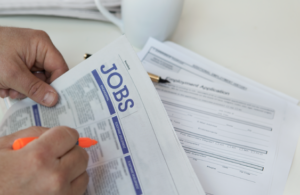By Cate Chapman, Editor at LinkedIn News
New jobless claims jumped last week to 261,000 — the highest level since October 2021 and a sign that government jobs data is now reflecting recent layoffs. Applications for unemployment benefits rose by 28,000, the largest weekly increase since July 2021. Though Labor Department data for the first-time filings can be volatile, they suggest a tight labor market is loosening. “U.S. companies announced more layoffs in the first five months of 2023 than in all of last year,” writes Bloomberg. Continuing claims, however, point to people finding work eventually. These fell to 1.76 million in the week ended May 27, the lowest since February.
- While U.S. payrolls surged by 339,000 in May, the unemployment rate also rose, to 3.7% from 3.4%.
By Callie Cox
Us Investment Analyst at eToro












👷♀️ WHAT JOBLESS CLAIMS TELL US ABOUT THE ECONOMY 👷♂️
Rising initial jobless claims — or the amount of people filing for unemployment for the first time — are one of the classic early signs of an economic recession.
It’s pretty simple: when unemployment is rising, people have less income to spend, and consumer spending is 70% of GDP growth.
Bad news first: initial jobless claims ARE rising. And today, data showed initial jobless claims rose to 260K, the highest level since October 2021. The four-week average is now 237K.
BUT are they at recession levels yet? Maybe not.
I like to track the four-week average of claims relative to the size of the labor force.
Why? 230K in claims hits differently when the number of people actively working or searching is 8% higher than it was 15 years ago.
So how do claims as a % of the labor force look?
Well, the four-week average of claims is about 0.14% of the labor force, well below the 0.3% average we’ve seen in the first month of all recessions dating back to 1970.
For us to see claims reach even a 0.2% level, the four-week average needs to rise to 333K
For 0.28%? 467K
So basically, we’re in this grey area of *concerning, but not alarming* for one of the earliest signs of economic trouble.
Which TBH, is a good way to describe how the economy has felt for months.
#jobs #economy #markets #investing #personalfinance #money